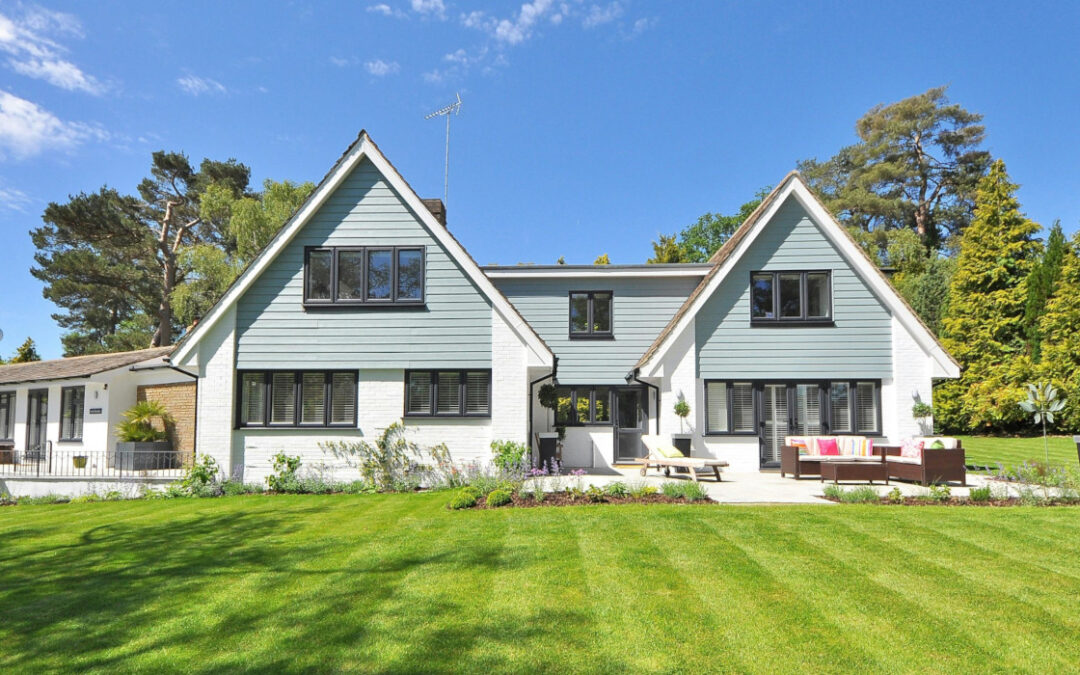Factors to Consider When Choosing Sod for Your Area
There are many factors that go into sod-laying, such as the soil you put your sod on top of. Things like texture (is it sandy, clay, loam, etc), pH levels, fertility, drainage, compaction, etc.
Soil Type and Quality
Different types of sod require different types of soil. It’s important to determine what soil your desired sod grows best in and take steps to prepare it properly.
Textures include sandy coastal or post-swamp areas (such as southeast Missouri or West Kentucky), heavy clay in the southeast regions, and rocky or arid soils in the west/hilly and mountainous areas.
Typical choices according to common regions:
Sandy Coastal Areas:
Sod Choices: Bahia, Bermuda, or Centipede.
Heavy Clay in the Southeast:
Sod Choices: Zoysia or Tall Fescue.
Rocky or Arid Soils in the West:
Sod Choices: Buffalo grass or Bermuda.
Sunlight and Shade Considerations
Sunlight and shade are also important factors in choosing the right sod. Different grass types vary widely in their tolerance to sunlight and shade, so matching the sod to your yard’s light conditions will give you the desired lush green yard.
Practical Tips for Balancing Sunlight and Shade
Certain grasses are better suited for shaded areas, while others require full sunlight to thrive:
High Shade Tolerance:
St. Augustine Grass: Best warm-season option for shaded areas.
Fine Fescues: Excellent cool-season grasses for dense shade.
Zoysia Grass: Tolerates partial shade, especially newer cultivars like ‘Emerald’ or ‘Zeon.’
Moderate Shade Tolerance:
Tall Fescue: Cool-season grass with deep roots, tolerates moderate shade.
Centipede Grass: Low-maintenance and tolerates some shade in warm climates.
Kentucky Bluegrass: Tolerates light shade but prefers sunnier spots.
Low Shade Tolerance:
Bermuda Grass: Requires full sun and struggles in shaded areas.
Bahia Grass: Thrives in sandy soils and full sunlight but fails in heavy shade.
Buffalo Grass: Prefers full sun; minimal shade tolerance.
Tips for properly balancing sunlight and shade:
Map Your Yard:
Observe how sunlight moves across your yard throughout the day.
Identify full-sun, partial-shade, and full-shade zones.
Mix and Match Grass Types:
For large lawns with varying light conditions, consider blended sod or a mix of grasses that adapt to different areas.
Proper Maintenance:
Reduce mowing height in shaded areas to allow more sunlight to reach the grass.
Avoid heavy fertilization in shaded spots to prevent stress on slower-growing grass.
Supplement with Landscaping:
Use shade-tolerant ground covers, mulches, or decorative plants in areas too shady for sod.
Common sods for different levels of shade:
Full Sun: Bermuda, Zoysia, Bahia, or Kentucky Bluegrass.
Partial Shade: Zoysia, Tall Fescue, Centipede, or some St. Augustine varieties.
Heavy Shade: St. Augustine, Fine Fescues, or mulch as an alternative.
Local Climate and Weather Patterns
As mentioned above, choosing the right climate for your sod is important, but so is choosing the right weather patterns. Some grass thrives on smaller amounts of rainfall, while others require regular watering. You can always install irrigation systems to supplement lack of rain, but here are our suggestions based on just weather patterns for your region:
Understand Your Region:
Look up your USDA Plant Hardiness Zone or consult a local extension office to identify your climate.
Consider Microclimates:
Identify areas of your yard with different exposures to wind, sunlight, or water accumulation.
Match Sod to Climate:
Select grasses bred to thrive in your specific region and conditions.
Plan for Maintenance:
Adjust watering, fertilizing, and mowing schedules based on how your grass responds to seasonal weather changes.
Assess normal patterns of precipitation:
Rainfall:
High Rainfall Areas: Choose sod that tolerates wet conditions, like Zoysia, St. Augustine, or Tall Fescue.
Low Rainfall Areas: Drought-tolerant grasses like Bermuda, Buffalo, or Bahia are ideal.
Irrigation Needs:
If your area experiences frequent drought or water restrictions, prioritize drought-resistant sod.
In arid regions, consider installing drought-tolerant warm-season grass like Buffalo grass.
Regions with cloudy or overcast weather: Consider shade-tolerant varieties like St. Augustine or Fine Fescues.
Regions with intense sunlight: Opt for sun-loving grasses like Bermuda or Zoysia.
Refer to the descriptions at the beginning of this article for more information on the best temperatures (cool VS warm-season) for different types of sod.
Usage and Foot Traffic
Some grasses are very resistant to heavy traffic, while others prefer social distancing. Here’s an overview of which you should use for your purposes:
1. High-Traffic Areas
These include lawns used for sports, playgrounds, or frequent gatherings where grass must be tough and recover quickly.
Best Sod Options:
Bermuda Grass (Warm-Season):
Highly durable and recovers quickly from damage.
Ideal for athletic fields and backyards with heavy use.
Requires full sun and regular maintenance.
Zoysia Grass (Warm-Season):
Dense, wear-resistant, and slow-growing, reducing the need for frequent mowing.
Performs well in moderate foot traffic areas with some shade tolerance.
Perennial Ryegrass (Cool-Season):
Rapid germination and excellent wear tolerance.
Commonly used in sports fields in cooler regions.
2. Moderate-Traffic Areas
Lawns with occasional use, such as family gatherings or small pets.
Best Sod Options:
Tall Fescue (Cool-Season):
Deep roots make it durable and drought-tolerant.
Handles moderate foot traffic well and is ideal for transitional zones.
St. Augustine Grass (Warm-Season):
Soft texture and moderate durability.
Tolerates light to moderate traffic but struggles with heavy wear.
Zoysia Grass (Warm-Season):
Also a good option for moderate traffic due to its wear resistance and attractive appearance.
3. Low-Traffic or Decorative Areas
Lawns primarily used for aesthetics, where durability is less critical.
Best Sod Options:
Centipede Grass (Warm-Season):
Low-maintenance and suitable for decorative lawns.
Does not handle heavy traffic but thrives in acidic, sandy soils.
Buffalo Grass (Warm-Season):
Drought-tolerant and requires minimal mowing and watering.
Best for ornamental lawns with minimal foot traffic.
Fine Fescues (Cool-Season):
Ideal for shady, low-traffic areas.
Soft texture and lush appearance make them a popular choice for decorative use.
4. Special Use Cases
Pets: Sod must resist wear and recover from urine spots.
Best Options: Bermuda Grass, Tall Fescue, or Zoysia Grass for durability and recovery.
Slopes or Erosion Control: Grasses with deep roots to hold soil in place.
Best Options: Zoysia Grass or Tall Fescue.
Key Factors to Evaluate
Wear Tolerance:
Choose sod that can withstand your anticipated level of foot traffic.
Recovery Rate:
High-traffic lawns need grasses that recover quickly from damage.
Shade and Sun:
Some durable sods, like Bermuda, require full sun, while others, like Zoysia, can handle partial shade.
Maintenance Needs:
High-traffic sods often require more maintenance to maintain their durability.
Related Articles
The Hidden Dangers of Laying Sod Over Existing Grass
Sod installation offers homeowners an immediate solution to achieving a lush, green lawn. By...
Optimal Seasons for Laying Sod: Spring vs Fall
Temperature plays a critical role in how well sod establishes itself. Cool-season grasses, such as...
The Ultimate Guide to Watering Sod: Optimal Amounts and Schedule for a Lush Lawn
Sod is pre-grown grass that is cultivated and harvested with a layer of soil held together by...
The Pros and Cons of Sod Installation vs. Seeding Your Lawn
Hello! Let’s talk grass. Grass is everywhere.MOST places it’s growing wild. Fields, farms,...


